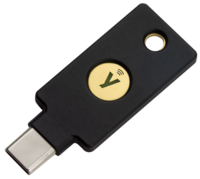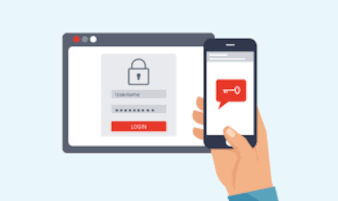Multifactor authentication (MFA) is an essential security measure that adds another layer of protection to user accounts and systems. There are several methods used for MFA, including SMS, push notifications, phone apps, and hardware tokens. Each of these methods has its own set of pros and cons. However, hardware tokens offer distinct security benefits over the other options.
SMS-based MFA involves sending a one-time password (OTP) to a user’s mobile phone. One advantage of this method is its simplicity and widespread availability, as most people have mobile phones capable of receiving text messages. However, SMS-based MFA has drawbacks. It relies on the security of the mobile network and can be vulnerable to SIM swapping attacks or interception of SMS messages.
Push notifications leverage smartphone applications to deliver authentication prompts. This method offers convenience, as users can simply tap a button on their device to approve or deny access. Push notifications are generally more secure than SMS, as they are not reliant on the phone number or SMS infrastructure. However, they may be susceptible to device compromise, such as malware or phishing attacks. As with SMS, push notifications can become subject to abuse as a result of malicious actors sending an SMS or push notification storm. That would lead to notification fatigue, and it would only take a single mistake, tapping OK instead of Deny, for a malicious actor obtaining access to the account.
Phone apps, such as authenticator apps, generate OTPs that are time-based and tied to a specific user account. They provide a higher level of security compared to SMS or push notifications, as they are not susceptible to interception. However, phone apps still rely on the security of the user’s smartphone. If the device is lost, stolen, or compromised, the security of the MFA method may be compromised as well.
Hardware tokens are physical devices, often in the form of a key fob or a smart card, that generate OTPs or have built-in cryptographic capabilities. Hardware tokens offer the highest level of security among the mentioned options. They are not dependent on the security of a mobile phone or computer, making them immune to malware or phishing attacks targeting these devices. Additionally, hardware tokens are typically resistant to tampering or cloning attempts, providing a high level of assurance. However, hardware tokens can be more costly to deploy and manage compared to other methods.
In summary, while each MFA method has its own advantages and disadvantages, hardware tokens offer distinct security benefits. They provide an extra layer of protection by removing reliance on potentially compromised devices and are resistant to various attack vectors. However, the choice of MFA method should consider factors such as cost, user convenience, and the specific security requirements of the system being protected.
Kind regards
Erwin


